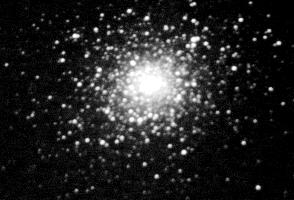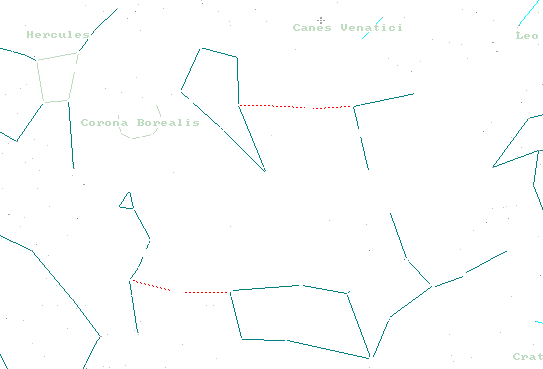Two Great Globulars
Jack Kramer
The summer sky is renowned for a profusion of globular clusters, and probably everyone immediately thinks of M13 in Hercules. But there are other good targets for the hunter of globulars. As we view this area of the sky, the Milky Way is still just to the east and we're looking to one side of our galaxy, out into space where we have a good view of the globular clusters that seem to form a halo around the galaxy.
For my money, one of the most visually beautiful globulars is M5 in Serpens Caput. While it's a very rich cluster, what makes it a standout is the fact that it's relatively loose for a globular. This allows us to look well into its very core and see a background glow that betrays the existence of many more faint stars. In Mike Purcell's CCD image below, the center appears very dense, but our eyes can't readily capture that many stars; instead we see a looser concentration and only with lengthy observation do we begin to see more and more stars. This cluster takes higher magnification very well. The distribution of stars away from the core is somewhat irregular, giving the cluster a slightly oval shape. M5 is the fifth brightest globular in total integrated light, ranking only behind M13 and M22 for observers in the northern states. It's also one of the oldest of the globulars (about 13 billion years).

Another globular cluster in the area is M3, which lies in a little arm of Canes Venatici that extends down between the constellations Coma Berenices and Bootes. This cluster ranks just behind M5 in richness, and it's very well-resolved, with a bright, dense central condensation. It also contains the largest number of variable stars of any globular.
These two clusters aren't near any bright stars, but note on the finder chart below that they lie roughly centered between some stars that should be easy to locate in a dark sky. The stars of Coma and Serpens are relatively faint, but once you get your bearings, the clusters are not too difficult to sweep up because they're visible in your finder scope. They're also observable from your backyard, but due to light pollution, star-hopping will require more effort.
 Published in the June 1996 issue of the NightTimes
Published in the June 1996 issue of the NightTimes





